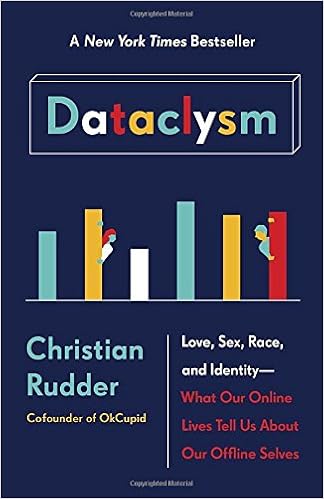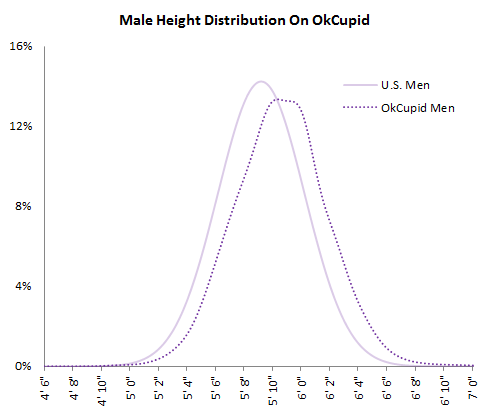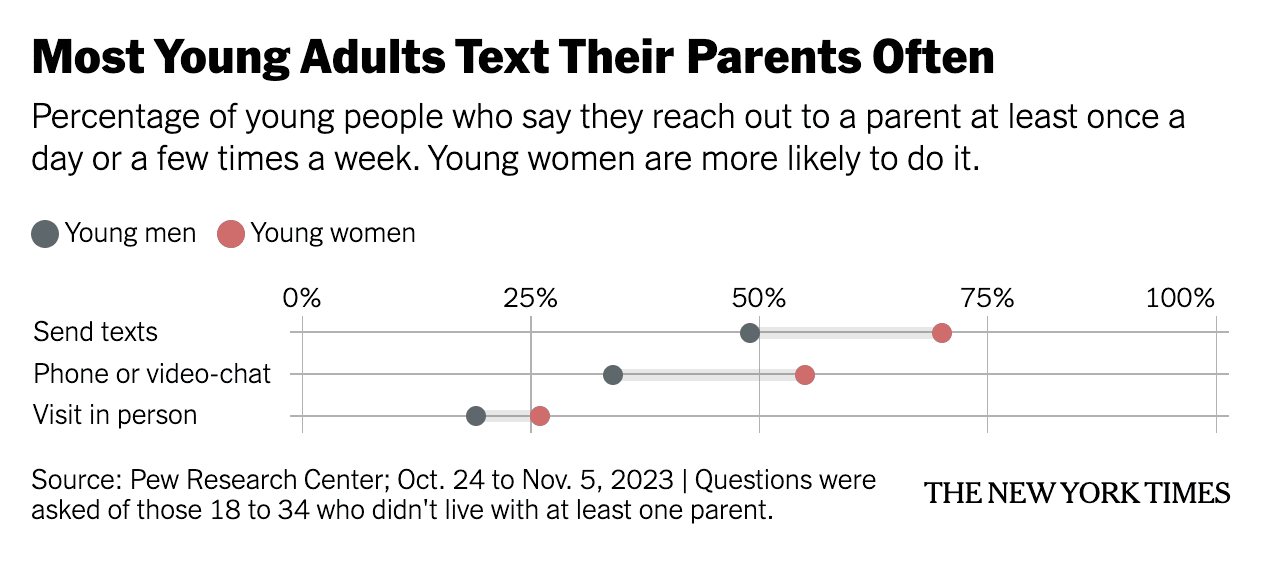Dating and living alone
Joseph Reagle
Our question(s)
How does digital communication shape our romantic relations & habitation?
(What can we learn about big data and privacy?)
Online romance
Rudder

An accessible presentation of many of the findings from the OkCupid blog as well as data from Google Trends, match.com, Facebook, and ShiftGig. People are biased towards the beautiful, the white, the tall, and the young. (Rudder 2014, “Dataclysm”)
Wade

A balanced approach to hookup culture based on interviews and student journaling, from freshman through postgraduate. Identifies enthusiasts, ambivalence, and abstainers. Argues that students can enjoy a great deal of casual freedom, but many also look for greater kindness and paths towards more meaningful relationships. (Wade 2017, “American hookup”)
“Existential Nightmare”
Michael Rosenfeld (Stanford) interviewed for The Atlantic (Thompson 2019)
Consequences of online dating??
- more communication
- bigger field can lead to
- more selectivity (better match)
- opportunities for minorities (ethnic, religious, sexual)
- …?
10% of “partnered” adults began online; ~25% for LGB and those under thirty (Vogels & McClain 2023)
Paradox of choice?
An age of DIY-everything and Kierkegaard’s “dizziness of freedom” (Thompson 2019)
“A Million First Dates”
the Internet makes it easier for single people to meet other single people with whom they might be compatible, raising the bar for what they consider a good relationship. But what if online dating makes it too easy to meet someone new? (Slater 2013)
Rejection mindset
increased dissatisfaction with the pictures and increased pessimism about one’s chances of finding a partner… [women] typically reject more, they might also cumulate rejections more quickly and thus more easily adopt a rejection mind-set. (Pronk & Denissen 2019)
1st pic has best chance, with a drop especially for women, after ~12–30
Yet…
people who meet their partners online are not more likely to break up (Rosenfeld & Ferdman 2016)
Speed to marriage
Of those who stay together:
- 4 years for ~50% of online daters to have transitioned to marriage
- 10 years for offline daters (Rosenfeld & Ferdman 2016)
Why?
I think it’s likely that people who look to online dating sites are more intent on finding a partner, especially those using sites like Match.com and eHarmony. (Rosenfeld & Ferdman 2016)
Those who want hookups can do that too.
But will online daters have a “meet cute” story? 🙂
More diverse?
… online dating sites show that there’s a strong preference for same-race dating. (Rosenfeld & Ferdman 2016)
White women prefer white men to the exclusion of everyone else – and Asian and Hispanic women prefer them even more exclusively. (Rudder 2009)
Does this lead to filter bubble?
OKCupid
Background
- The Harvard students who started TheSpark and SparkNotes spun out the quiz function as a dating feature and site.
- Co-founder Christian Rudder, blogged big-data insights.
- In Feb 2011 OkCupid was acquired by operators of Match.com for $50 million. (Wikipedia 2011)
Big data
Benefits
- new insights at large (e.g., food born poisoning)
- personalization for a person (e.g., music recommendation)
Concerns
- insights at large
- confusing averages with individuals
- personalization
- filter bubble
- privacy
- errors
Christian Rudder
(What public speaking tips would you give him?)
Lies and Dating
Getting real about deceit
Height

“I’m 6 feet tall.” REALITY: People are two inches shorter in real life. (Rudder 2010)
Height
Income
“I make $100,000 a year.” REALITY: People are 20% poorer than they say they are.
people exaggerate more as they get older
if you’re a young guy and don’t make much money, cool. If you’re 23 or older and don’t make much money, go die in a fire. (Rudder 2010)
Photos
“Here’s a recent pic.” REALITY: The more attractive the picture, the more likely it is to be out-of-date. (Rudder 2010)
median photo age was 92 days, but hotter photos were older as were photos of older people (Rudder 2010, p. 6)
- Is this all just hype?
- Where’s the line between “polish” and deceit?
- Are we preoccupied by (paradox of) choice over commitment?
Most recently
“Soul-destroying”
[Match Group] saw declining paying users for the past eight quarters, and payers for Tinder were down 4% in the latest quarter. (Lu 2024)
Alternatives?
- avoiding a “torrent of likes” and superficiality
- approaching people in public (pear rings)
- improving social and flirting skills
- looking to singles-events, hobbies, friends, and family
Image privacy
EXIF Viewer
McCafee/Vice Opsec
(RT deleted from Youtube after Ukraine invasion)
Jon McCafee & OSINT
Geoguessers
Singletons
History and culture
- 1850: 01% of adults lived alone
- 1950: 04% of adults lived alone
- 2021: 15% (28% of all U.S. households) (Chamie 2021)
- Sweden: 47% of households
- China: 25% of households (Chamie 2025)
- India: 15% of households
Age
Before age 65, men are more likely to live alone than women. After age 65, however, that trend reverses. Approximately 80 percent of the elderly living alone in America are women. (Chamie 2021)
Why?
- economic prosperity
- individualism
- digital communications
- (widowers)
[digital communications] has allowed people to experience the pleasures of social life even when they’re living alone. (Klinenberg 2012)
How is it understood?
- a sign of success
- opportunity to invest in self
- implies need to cultivate social networks
Implications
What matters is not whether we live alone, but whether we feel alone. (Klinenberg 2012)
Messaging

Conclusion
Wrap up
Write a “3-minute paper” (bullets are fine) on:

Social changes
What’s this sound like?
networked individualism (Rainie & Wellman 2012, “Network”, pp. 6-7)